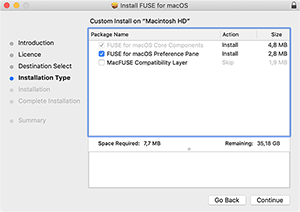
Tresorit is said to give its users an end-to-end cloud solution for them to store personal data, enterprise data, and business data on their cloud.

#Tresorit for mac manual#
Manual Ways to Uninstall Tresorit on Mac Quickly Part 4. Uninstall Tresorit on Mac Automatically & Easily Part 3.

But if you really want to uninstall Tresorit on Mac, we will help you do this job by providing some useful tools that help remove needless applications immediately.Ĭontents: Part 1. And files will not be synced to the cloud anymore. This highly privileged app can access location data, camera and microphone, call history, photos, or even wipe the device by setting malicious scene activation rules.Once that you uninstall the Tresorit desktop sync client, it means that the Tresorit will be removed from your Mac.
#Tresorit for mac code#
To make matters worse, this is a service that is accessible by any app on macOS, so no special privileges are required for the exploitation of this bug.įinally, Trellix’s analysts found a flaw in UIKitCore on the iPadOS, where an app can achieve code execution inside of SpringBoard. Trellix has found that OSLogService XPC service can also be abused for reading information from the syslog, which typically contains sensitive data.
#Tresorit for mac install#
An attacker with access to a process that communicates with these daemons could exploit the flaws to install arbitrary apps on macOS. Similar vulnerabilities were also found in “contextstored,” which is related to CoreDuet, and in “appstored” and “appstoreagent” on macOS. These two bypasses helped Trellix’s analysts uncover a new class of bugs, starting with one in “coreduetd,” a process that collects data about device behavior.Īn attacker meeting the prerequisites for exploitation in a sensitive process such as Safari or Messages can send a malicious NSPredicate and access the user’s calendar, address book, photos, and more. Apple assigned this bypass the identifier CVE-2023-23530.įor NSPredicateVisitor, Trellix has found a similar bypassing possibility, exploiting an exclusion for the “expressionType” property to execute arbitrary code and gain access to sensitive information. Trellix, however, says that its analysts have found a way to empty these lists, essentially nullifying the mitigations. The two were vulnerable classes that NSO’s Pegasus malware abused in attacks against iPhone devices involving the FORCEDENTRY zero-click remote code execution exploit.įor example, NSPredicate is a class that allows developers to filter lists of objects, but attackers found a way to abuse it to dynamically execute arbitrary code in another process.Ībusing NSPredicate for unsigned code execution was reported to Apple back in 2019 and then extensively detailed in a blog post published in January 2021.Īpple’s responded to these revelations by applying mitigations in the form of creating large denylists to prevent class abuse.

Trellix’s analysts discovered the possibility of running unsigned code on macOS and iOS after exploring the potential to bypass NSPredicate and NSPredicateVisitor mitigations. Moreover, the ability to dynamically execute code has been almost completely stripped, so running malicious code on iOS is virtually impossible.Īspects of this security system have been passed to macOS, which has started to enforce similar code-signing restrictions with more vigor in recent years. Security BlocksĪpple has been following a rather aggressive protection system for iOS that only permits applications signed by a verified developer certificate to run. Trellix notified Apple of the vulnerabilities before their disclosure, and the tech giant fixed them with the release of macOS 13.2 and iOS 16.3, currently the latest available versions. The severity of the flaws ranges between medium and high and could lead to privilege escalation or sandbox escape on either of Apple’s platforms. Security researchers have discovered a new class of bugs that could have allowed bypassing the code signing mechanisms that protect Apple iOS and macOS from malicious code execution.


 0 kommentar(er)
0 kommentar(er)
